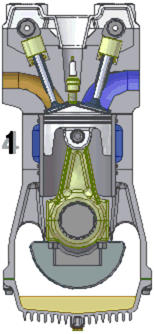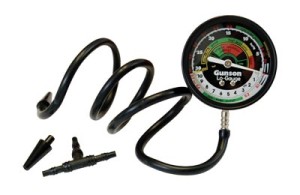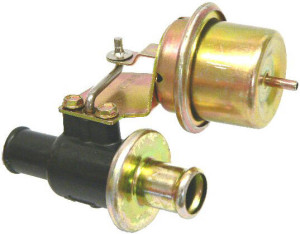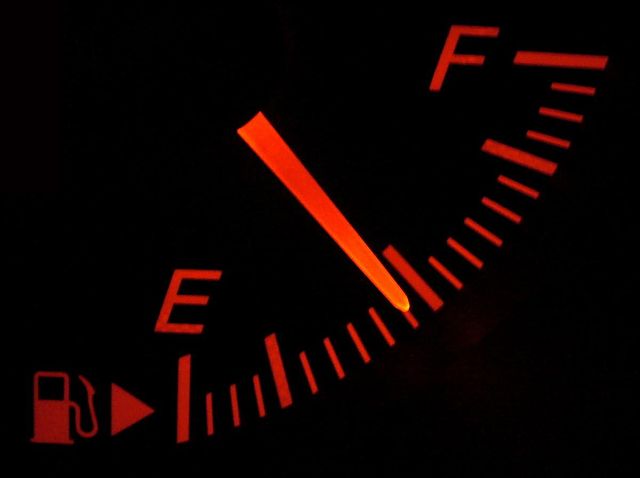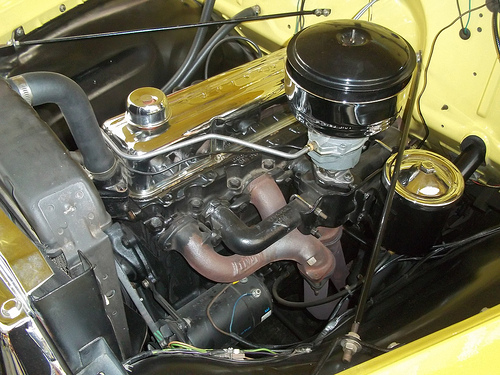What is Manifold Vacuum?
Manifold vacuum is the partial vacuum that exists inside the intake manifold of a naturally aspirated Otto or two-stroke cycle engine. It is created by the movement of the pistons (specifically during the intake or induction strokes) and maintained by the restricted flow of air past a throttle plate or plates. Since manifold vacuum is directly affected by various internal engine problems, it can be a useful diagnostic tool. Some engines also include a manifold absolute pressure (MAP) sensor that monitors engine vacuum for the engine control unit (ECU).
Since manifold vacuum is automatically generated as a byproduct of normal engine operations, it is often harnessed as an auxiliary power source. This type of vacuum use was ubiquitous prior to the widespread use of electronic controls and devices, but many vehicles still make use of it today. One extremely common use of manifold vacuum power is the vacuum brake booster, which uses manifold vacuum to amplify the force that’s applied to a brake master cylinder when a brake pedal is depressed.
Contents
How Does Manifold Vacuum Work?
Manifold vacuum is a natural byproduct of the way that Otto and two-stroke cycle engines work, which is to say most non-diesel internal combustion engines. When a piston in one of these engines moves down on the intake or induction stroke, the volume of the combustion chamber expands. Since the corresponding intake valve is open when that occurs, the movement of the piston sucks air in from the intake.
Due to the way that non-diesel internal combustion engines utilize a throttle (either in a carburetor or a throttle body) to control the flow of air into the intake manifold, the throttle plate essentially creates a choke point. This choke point results in a lower level of pressure inside the intake manifold than outside of it, which is where manifold vacuum comes from.
Opening the Throttle
When the the throttle is opened by depressing the accelerator pedal, more air is allowed to pass into the intake manifold. A corresponding amount of fuel is also added (either by the carburetor or fuel injection system), which results in a greater power output from the engine. Manifold vacuum also drops as the throttle is open, and it reaches its lowest possible level at wide open throttle (WOT).
Although wide open throttle (i.e. “flooring the gas pedal”) should theoretically result in an equalization in pressure between the manifold and the atmosphere, this typically isn’t the case. In most applications, there will still be a weak vacuum present in the intake manifold even at wide open throttle. Some vehicles also have some type of vacuum canister to provide a backup “reservoir” of vacuum when the throttle is open.
Harnessing Manifold Vacuum
Since manifold vacuum is present as a natural byproduct in all internal combustion engines that use the Otto cycle (i.e. all gasoline engines used in passenger cars, trucks, etc), it is commonly harnessed for a handful of different purposes. Although the use of manifold vacuum varies from one vehicle to another, and it has been used in different ways throughout the years, there are two primary ways that manifold vacuum can be used:
- diagnostic purposes
- auxiliary power
Manifold Vacuum as a Diagnostic Tool
Careful examination of manifold vacuum can reveal some useful information about the way that an engine is running. For instance, low vacuum can indicate worn components (i.e. piston rings, valves), a vacuum leak, or improper valve timing depending on the specific level, provided that the level is stead. A fluctuating vacuum reading, on the other hand, can indicate problems like worn valve guides, a blown head gasket, or a bad idle mixture.
Although any vacuum gauge that’s calibrated to read between 0 and 30 in Hg (inches of mercury) can be used to measure manifold vacuum, some vacuum gauges are specifically designed for automotive applications. These gauges have special markings that indicate what the readings should be for a healthy engine under specific conditions (i.e. idle, snapped throttle, etc). This type of vacuum gauge is especially useful if you don’t have a lot of diagnostic experience.
Manifold Vacuum as a Power Source
Throughout the years, manifold vacuum has been used to power everything from HVAC controls to brake boosters. Some vehicles have even used manifold vacuum to operate accessories like windshield wipers, which helped take some load off of under-powered electrical systems. That isn’t an issue today, but vacuum is still commonly used to power brake boosters.
Manifold Vacuum Leaks
Since manifold vacuum is essentially just the pressure differential between the intake system of a vehicle and atmospheric pressure, a manifold “leak” actually results in excess air leaking into the system rather than vacuum leaking out. This will typically result in a rough idle and rich running condition in carbureted fuel systems and a lean condition and racing idle in fuel injected systems due to the ways that these different systems handle the introduction of excess air.
Regardless of the type of fuel system, a manifold vacuum leak can be diagnosed by measuring manifold vacuum (it will be very low) or listening for a hissing sound. The leak can then be located by spraying something like WD-40 or throttle plate cleaner along the intake manifold and vacuum lines. When you spray at the location of the leak, the idle will temporarily level out. (note: this type of operation is performed at your own risk, since chemicals like throttle plate cleaner are flammable)

